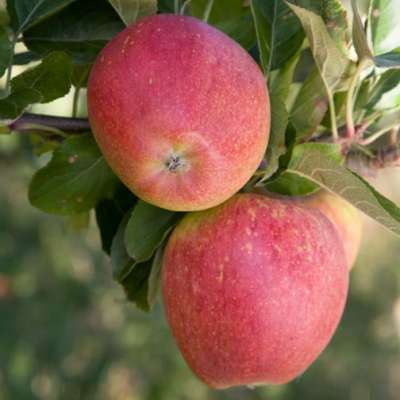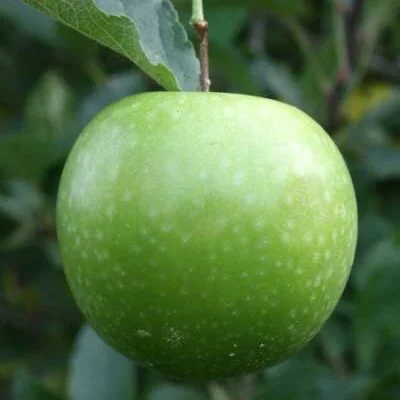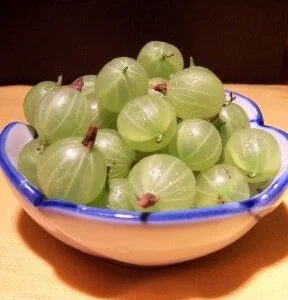Your basket is currently empty!
Planting and Staking
As for apples and pears.
Pruning
All pruning should be done in the spring or early summer, to avoid infection of silver leaf disease. Plums and cherries can both be grown in a natural shape with very little pruning. Leave the tree almost entirely unpruned until it settles down to fruiting, just remove the odd branches that are overcrowding the tree, if any. If you require more laterals than are produced naturally, simply shorten some of the side shoots. In later years, just prune to keep the tree tidy, preferably in summer (July).
The Dwarf Pyramid
This by far the best trained form for plums and cherries if you require your tree to remain an easily manageable size. Plums can even be grown in a fruit cage using this method and all trees are easily netted from birds, which is very important with cherries. After planting, the tree can be left until the spring and as growth starts the main stem should be cut back to 4′ from ground level. This may have been done at the nursery before despatch. During the summer, usually in late July, all of the new side branches should be shortened to about 8″ pruning to a downward pointing bud, The leader (main Stem) should be left unpruned. If the side shoots appear too close together, remove some completely to leave a well shaped tree. All shoots below 18″ from the ground should he completely cut off.
Following Spring and Future Seasons:
As growth starts in the spring the leader should be cut back by about half to two thirds of the new growth, pruning to a bud the opposite side to the previous year’s pruning. In future years when the tree has reached the required height of 8-9′ the leader should be cut back in May to control at this height. In summer each year all of the current season’s growth of each branch should he shortened to about 8 leaves, all laterals growing from these branches should be pruned to 6 leaves. Any vigorous shoots near the top of the tree should he cut out. Your tree is now maintained in an easy to manage heavy cropping form. Rootstocks St Julian A and Pixy for plums are both ideal for this culture as is Colt for cherries.
The Fan Trained Tree
It is normally best to train your own fan trained tree if you require this form to grow against a wall or fence. By training your own tree the end result is a tree to meet exactly your conditions and requirements. Plant a maiden tree and the first winter prune to 12-18″ above the ground. This should be done as growth starts in the spring, or sometimes in late winter. In the first summer choose 5 good shoots and tie them to wall or wires. spreading them out so that the top one is vertical and the lowest two horizontal, with the remaining two evenly spaced between them to form the basic fan.
The Following Spring:
Prune the 5 shoots hard by cutting back to half to three quarters of the growth.
The Second Summer:
You should now select on average 9-11 shoots and tie them in, equally spaced as before. All weak shoots that are not needed for branches should be pruned to 5 or 6 leaves.
The Third Spring:
The branches should all be pruned by removing a quarter to a third of the past season’s growth.
General Summer Pruning in July:
As the new shoots are made the growing point should be pinched out after 6 or 7 leaves. Any that are required for further training should be left. After cropping, between mid August and September. the shoots that you have pinched out should be pruned back further to 3 leaves to encourage the growth of fruit buds at the base for the following year. When your fan has covered your wall to your satisfaction, the growth that reaches the top of the wall should be cut back to a weaker lateral just below, in July.
Feeding All Trees
A balanced fertilizer such as Growmore should be applied at 4oz per square yard in February. Nitrogen can be applied at loz per square yard in late March if required. Mulch as for apples and pears.
Watering
Water regularly during dry weather, avoiding irregular heavy watering when the fruit is ripening as this can cause splitting of the fruit 41/2 gallons per square yard every 10 days is normally sufficient until rain corrects a drought period.
Thinning
If the trees are carrying a very excessive crop, thin after the stones have formed. Those left on the tree should be 2 or 3″ apart. It is not necessary to thin cherries.
Harvesting
Plums
Plums do not ripen at the same time so it is necessary to pick 2 or 3 times.
Cherries
Leave on the trees until they are ripe unless they start to crack, pick with the stalk attached using scissors if necessary. If the stalk is left on the tree this may encourage brown rot.
Pruning Acid (Cooking) Cherries
General culture is the same as for sweet cherries, but pruning is different. When the tree has reached fruiting size, pruning is based on the fact that with acid cherries the fruit is produced almost entirely on the growth made in the previous summer. The aim is to produce enough new shoots to carry the next season’s crop. In early summer cut out a proportion of the older shoots to 1 year old wood so that the old wood is continually replaced.






